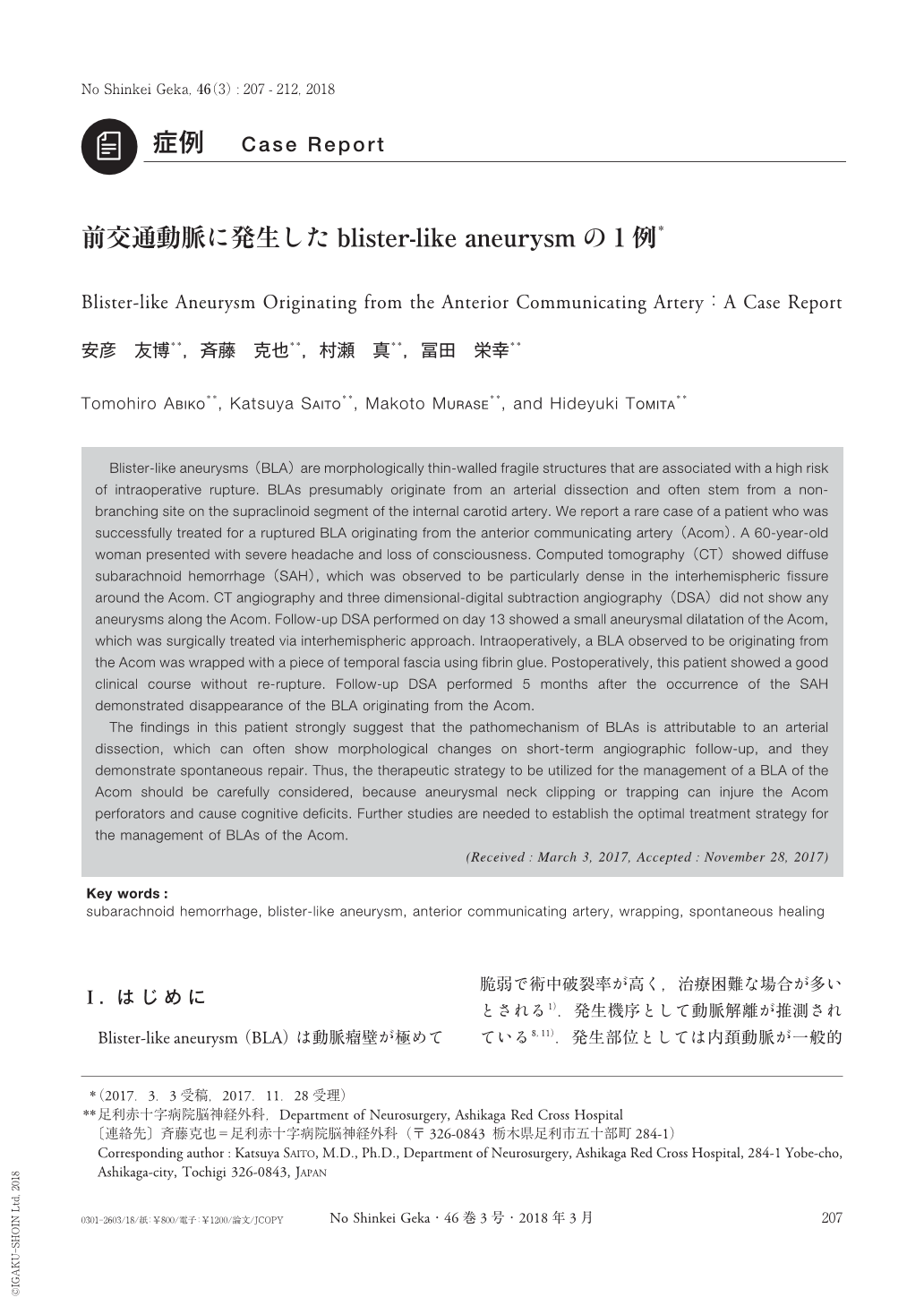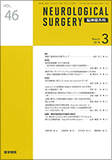Japanese
English
- 有料閲覧
- Abstract 文献概要
- 1ページ目 Look Inside
- 参考文献 Reference
Ⅰ.はじめに
Blister-like aneurysm(BLA)は動脈瘤壁が極めて脆弱で術中破裂率が高く,治療困難な場合が多いとされる1).発生機序として動脈解離が推測されている8,11).発生部位としては内頚動脈が一般的で,前交通動脈(anterior communicating artery:Acom)に発生した例の報告は非常に稀である.Acomに発生した動脈瘤を治療する際には穿通枝の問題があり,内頚動脈発生のBLAに対して行われているclipping on wrappingやtrapping+bypassを行うことは難しい.今回われわれは,Acomに発生したBLAに対してwrappingのみを行い経時変化を追ったところ,自然消退を観察することができた.興味深い症例のため報告する.
Blister-like aneurysms(BLA)are morphologically thin-walled fragile structures that are associated with a high risk of intraoperative rupture. BLAs presumably originate from an arterial dissection and often stem from a non-branching site on the supraclinoid segment of the internal carotid artery. We report a rare case of a patient who was successfully treated for a ruptured BLA originating from the anterior communicating artery(Acom). A 60-year-old woman presented with severe headache and loss of consciousness. Computed tomography(CT)showed diffuse subarachnoid hemorrhage(SAH), which was observed to be particularly dense in the interhemispheric fissure around the Acom. CT angiography and three dimensional-digital subtraction angiography(DSA)did not show any aneurysms along the Acom. Follow-up DSA performed on day 13 showed a small aneurysmal dilatation of the Acom, which was surgically treated via interhemispheric approach. Intraoperatively, a BLA observed to be originating from the Acom was wrapped with a piece of temporal fascia using fibrin glue. Postoperatively, this patient showed a good clinical course without re-rupture. Follow-up DSA performed 5 months after the occurrence of the SAH demonstrated disappearance of the BLA originating from the Acom.
The findings in this patient strongly suggest that the pathomechanism of BLAs is attributable to an arterial dissection, which can often show morphological changes on short-term angiographic follow-up, and they demonstrate spontaneous repair. Thus, the therapeutic strategy to be utilized for the management of a BLA of the Acom should be carefully considered, because aneurysmal neck clipping or trapping can injure the Acom perforators and cause cognitive deficits. Further studies are needed to establish the optimal treatment strategy for the management of BLAs of the Acom.

Copyright © 2018, Igaku-Shoin Ltd. All rights reserved.


